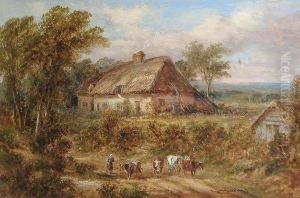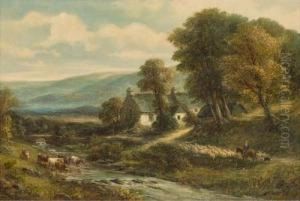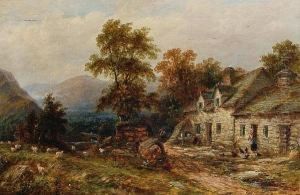Thomas Henri Thomas Paintings
Thomas Henri Thomas, often a lesser-known figure in the pantheon of Welsh artists, was nonetheless a significant contributor to the cultural and artistic landscape of Wales during the late 19th and early 20th centuries. Born in 1839, Thomas's life and work were deeply intertwined with the cultural, educational, and nationalistic movements of Wales, reflecting the broader currents of his time. His contributions were not limited to his paintings; Thomas was also involved in the Welsh Eisteddfod movement, an important aspect of Welsh cultural life that promoted the language, literature, and arts of Wales.
Thomas's artistic oeuvre was diverse, encompassing landscapes, portraits, and historical scenes. His work often reflected his deep love for Welsh history and its natural beauty, elements that were central to his identity both as an artist and as a Welshman. Through his paintings, Thomas sought to capture the essence of Welsh heritage, aiming to inspire a sense of pride and national consciousness among his compatriots.
In addition to his contributions as a painter, Thomas was also known for his role as an illustrator and designer. He contributed to various publications and projects, which included designing logos and emblems for several Welsh institutions, further embedding his legacy within the cultural fabric of the nation. His involvement with the Eisteddfod, as both a participant and a judge, underscored his commitment to fostering a vibrant cultural life in Wales.
Thomas Henri Thomas passed away in 1915, leaving behind a legacy that, while perhaps not as widely recognized as some of his contemporaries, remains an essential part of the story of Welsh art. His dedication to the celebration and preservation of Welsh culture through his art and his active participation in cultural movements make him a noteworthy figure in the history of Welsh arts and culture.


